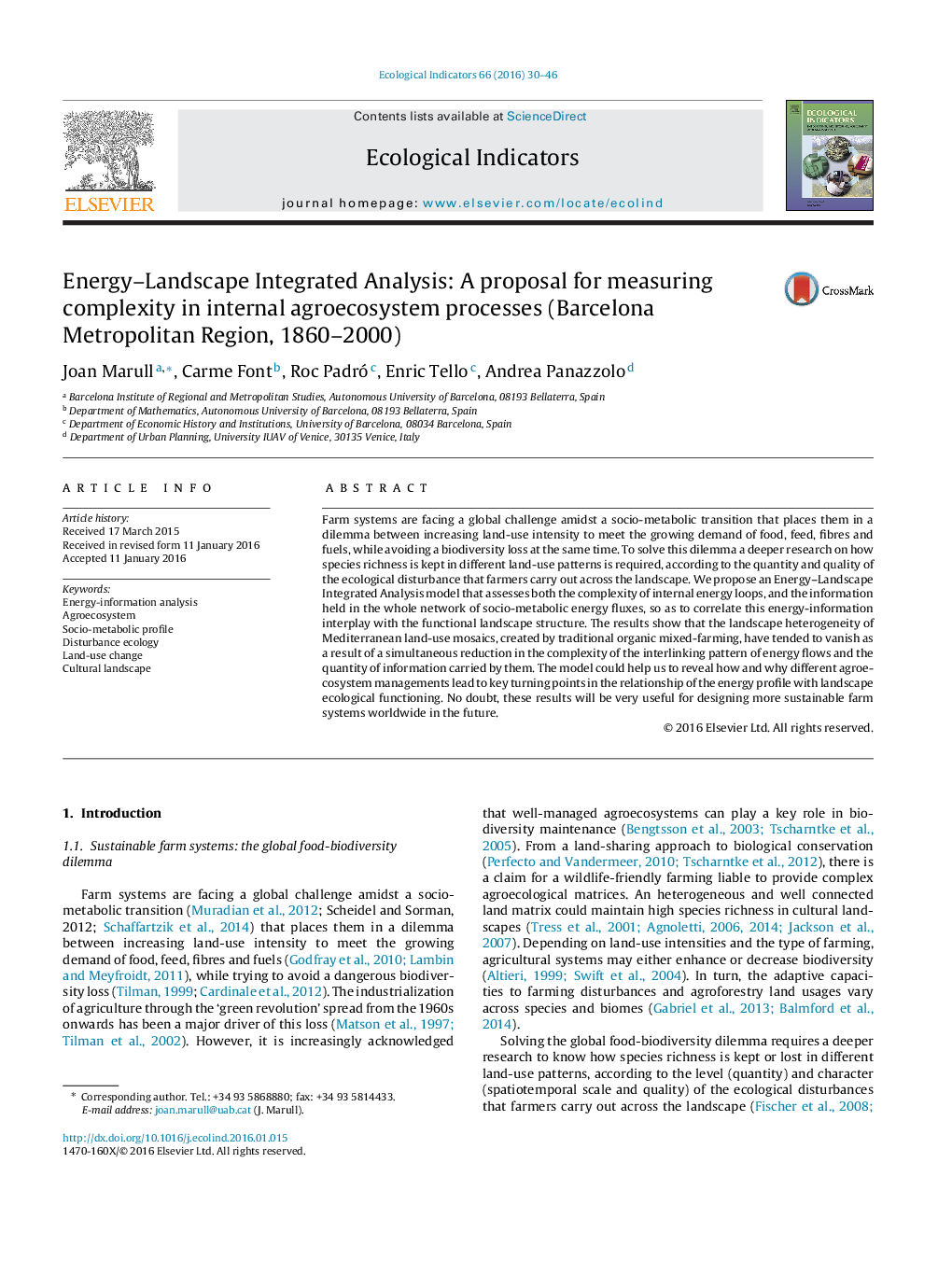| Article ID | Journal | Published Year | Pages | File Type |
|---|---|---|---|---|
| 6293404 | Ecological Indicators | 2016 | 17 Pages |
Abstract
Farm systems are facing a global challenge amidst a socio-metabolic transition that places them in a dilemma between increasing land-use intensity to meet the growing demand of food, feed, fibres and fuels, while avoiding a biodiversity loss at the same time. To solve this dilemma a deeper research on how species richness is kept in different land-use patterns is required, according to the quantity and quality of the ecological disturbance that farmers carry out across the landscape. We propose an Energy-Landscape Integrated Analysis model that assesses both the complexity of internal energy loops, and the information held in the whole network of socio-metabolic energy fluxes, so as to correlate this energy-information interplay with the functional landscape structure. The results show that the landscape heterogeneity of Mediterranean land-use mosaics, created by traditional organic mixed-farming, have tended to vanish as a result of a simultaneous reduction in the complexity of the interlinking pattern of energy flows and the quantity of information carried by them. The model could help us to reveal how and why different agroecosystem managements lead to key turning points in the relationship of the energy profile with landscape ecological functioning. No doubt, these results will be very useful for designing more sustainable farm systems worldwide in the future.
Related Topics
Life Sciences
Agricultural and Biological Sciences
Ecology, Evolution, Behavior and Systematics
Authors
Joan Marull, Carme Font, Roc Padró, Enric Tello, Andrea Panazzolo,
